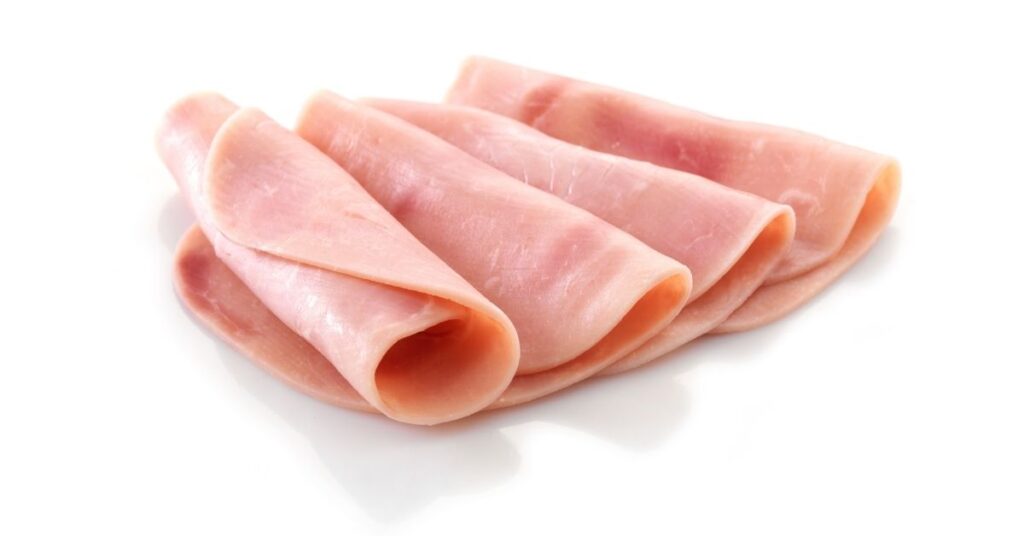Yes, prosciutto can go bad.
Can Prosciutto Go Bad?
Yes, prosciutto does go bad. Prosciutto, like any other meat, is perishable. While the salt-curing process extends its shelf life, it won’t last forever. So, how do you know when your prosciutto has gone beyond its prime? Let’s dive into the signs of spoiled prosciutto and learn how to prevent it from going bad.
What is Prosciutto?
Before we get into the nitty-gritty of spoilage, let’s understand what prosciutto is. Prosciutto is a dry-cured Italian ham made from the hind leg of a pig. The curing process involves salting the meat and then air-drying it for months (sometimes even years!). It creates a salty, flavorful, and melt-in-your-mouth delicacy.
There are two main types of prosciutto:
- Prosciutto Crudo: This is the raw, uncooked variety.
- Prosciutto Cotto: This is cooked prosciutto, similar to deli ham.
How Do You Tell If Prosciutto Has Gone Bad?
Here are the most common signs that your once-delicious prosciutto is now past its prime:
- Change in Smell: Fresh prosciutto has a mild, sweet, and slightly salty smell. Bad prosciutto has a rancid, sour, or unpleasant odor. If it smells off, ditch it.
- Change in Color: Fresh prosciutto has a vibrant pink-red color. Spoiled prosciutto may turn gray, green, brown, or develop mold spots.
- Change in Texture: Fresh prosciutto is moist but firm. Spoiled prosciutto can become slimy, sticky, or hard and dried out.
- Presence of Mold: While some white mold on the outside of a whole prosciutto leg can be normal, any green or black mold is a sign of spoilage.
How Long Does Prosciutto Last?
The shelf life of prosciutto depends on several factors, including:
- Type: Prosciutto crudo can last longer than prosciutto cotto.
- Form: Whole prosciutto legs have a longer shelf life than pre-sliced prosciutto due to reduced exposure to air.
- Storage: Proper storage significantly impacts how long prosciutto stays fresh.
Here’s a handy table to help you understand prosciutto’s lifespan:
| Form of Prosciutto | Unopened | Opened |
| Whole prosciutto leg (crudo) | Up to 12 months | Up to 40 days |
| Pre-sliced prosciutto (crudo) | Up to 4 months | 3-5 days |
| Prosciutto cotto | 1-2 Months | 3-5 days |
Important Note: Always check the best-by date on the packaging.
How to Store Prosciutto to Extend Shelf Life
Proper storage is crucial for keeping prosciutto fresh:
Whole prosciutto leg:
- Hang it in a cool, dry place away from direct sunlight.
- Once you’ve cut into it, protect the cut surface with plastic wrap or wax paper.
Pre-sliced prosciutto:
- Store in an airtight container in the refrigerator.
- Separate the slices with parchment paper to prevent them from sticking together.
What Can You Do With Prosciutto That’s Close to Expiring?
Don’t worry if your prosciutto is nearing its best-by date! Here are some tasty ways to utilize it:
- Cook with it: Toss slices into pasta dishes, pizzas, or soups.
- Wrap it around other ingredients: Wrap prosciutto around melon, cheese, or grilled vegetables.
- Make crispy prosciutto: Bake it in the oven for a crunchy, salty snack.
Important: Always use your senses before consuming prosciutto, even if it’s within its “best by” date. If it shows any signs of spoilage, discard it immediately.
Can You Freeze Prosciutto?
Yes, you can freeze prosciutto, but it can slightly affect its texture. Here’s how to do it safely and effectively:
- Whole prosciutto legs: It’s recommended to slice the leg before freezing.
- Pre-sliced prosciutto: Freeze slices in individual portions or layered with parchment paper to prevent sticking.
- Wrap tightly: Use plastic wrap or freezer bags and squeeze out as much air as possible.
- Label: Indicate the date of freezing.
- Freeze for up to: 3 months for optimal quality.
Tip: Thaw frozen prosciutto in the refrigerator overnight before using.
FAQs about Prosciutto
Let’s address some of the most common questions people have about prosciutto:
1. Can I eat the mold on prosciutto?
Sometimes a white mold develops on the outer casing of a whole prosciutto leg. This is usually a harmless type of mold that forms during the curing process. You can simply cut it away. However, any green or black mold is a sign of spoilage, and the entire leg should be discarded.
2. Can you get sick from eating bad prosciutto?
Yes, eating spoiled prosciutto can make you sick. It can contain harmful bacteria that can lead to food poisoning. Symptoms may include nausea, vomiting, diarrhea, stomach cramps, and fever.
3. What’s the white stuff on prosciutto?
The white stuff on prosciutto can have two explanations:
- Salt: During the curing process, salt can crystallize on the surface of prosciutto. This is completely normal and safe to eat.
- Tyrosine: Tyrosine is an amino acid that can also form white crystals on prosciutto as it ages. It’s a sign of a well-aged prosciutto, and it’s also safe to eat.
4. Is prosciutto supposed to be slimy?
No, prosciutto should not be slimy. A slimy texture usually indicates spoilage.
Table: Pros and Cons of Eating Prosciutto
| Pros | Cons |
| Rich in protein | High in sodium |
| Source of B vitamins | High in saturated fat |
| Delicious and versatile | Can be expensive |
| Adds savory flavor to dishes | May not be suitable for everyone (e.g., those with certain dietary restrictions) |
Conclusion- Can Prosciutto Go Bad?
Prosciutto does go bad, but with a bit of knowledge about spoilage signs and proper storage, you can enjoy this delicious delicacy for longer. Remember, if it looks, smells, or feels off, it’s best to toss it for safety.
